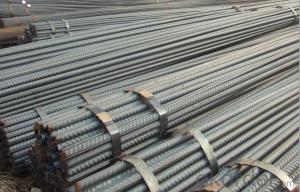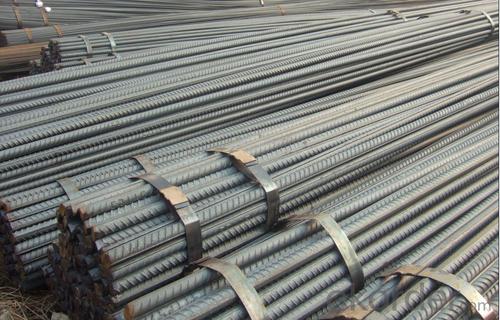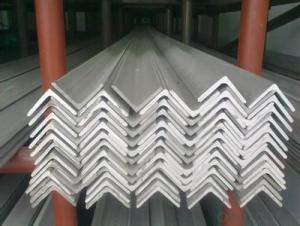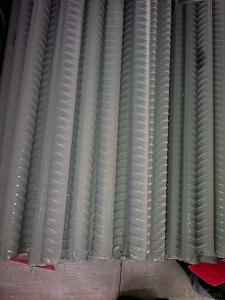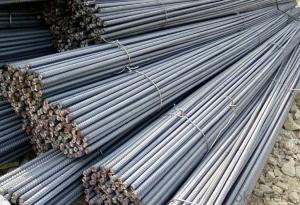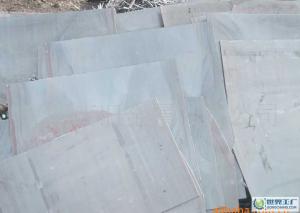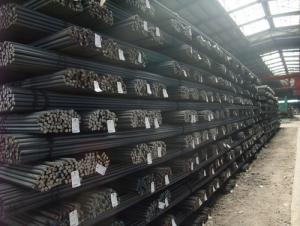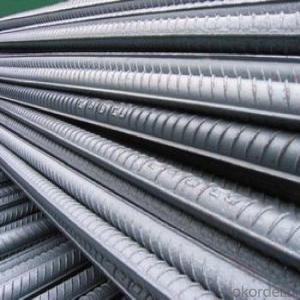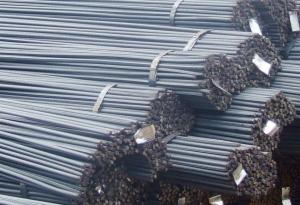Deformed Bar Hot Rolled High Quality BS4449 ASTM
- Loading Port:
- Tianjin
- Payment Terms:
- TT OR LC
- Min Order Qty:
- 25 m.t.
- Supply Capability:
- 2000000 m.t./month
OKorder Service Pledge
OKorder Financial Service
You Might Also Like
Specification
Product Description:
OKorder is offering Deformed Bar Hot Rolled High Quality BS4449 ASTM at great prices with worldwide shipping. Our supplier is a world-class manufacturer of steel, with our products utilized the world over. OKorder annually supplies products to European, North American and Asian markets. We provide quotations within 24 hours of receiving an inquiry and guarantee competitive prices.
Product Applications:
Deformed bar is widely used in buildings, bridges, roads and other engineering construction. Big to highways, railways, bridges, culverts, tunnels, public facilities such as flood control, dam, small to housing construction, beam, column, wall and the foundation of the plate, deformed bar is an integral structure material. With the development of world economy and the vigorous development of infrastructure construction, real estate, the demand for deformed bar will be larger and larger
Product Advantages:
OKorder's Deformed Bar Hot Rolled High Quality BS4449 ASTM are durable, strong, and resist corrosion, exact size, regular package, chemical and mechanical properties are stable.
Main Product Features:
· Premium quality
· Prompt delivery & seaworthy packing (30 days after receiving deposit)
· Corrosion resistance
· Can be recycled and reused
· Mill test certification
· Professional Service
· Competitive pricing
Product Specifications:
Manufacture: Hot rolled
Grade: BS4449
Certificates: ISO, SGS, BV, CIQ
Diameter: 6mm,8mm,10mm,12mm,14mm,16mm,18mm,20mm,
22mm,25mm,28mm,32mm,36mm,40mm,50mm
Length: 6M, 9M,12M or as required
Packaging: Export packing, nude packing, bundled
Chemical Composition: (Please kindly find our chemistry of our material based on HRB500 as below for your information)
Grade | Technical data of the original chemical composition (%) | ||||||
C | Mn | Si | S | P | V | ||
HRB400 | ≤0.25 | ≤1.60 | ≤0.80 | ≤0.045 | ≤0.045 | 0.04-0.12 | |
Physical capability | |||||||
Yield Strength (N/cm²) | Tensile Strength (N/cm²) | Elongation (%) | |||||
≥400 | ≥570 | ≥14 | |||||
Theoretical weight and section area of each diameter as below for your information:
Diameter(mm) | Section area (mm²) | Mass(kg/m) | Weight of 12m bar(kg) |
6 | 28.27 | 0.222 | 2.664 |
8 | 50.27 | 0.395 | 4.74 |
10 | 78.54 | 0.617 | 7.404 |
12 | 113.1 | 0.888 | 10.656 |
14 | 153.9 | 1.21 | 14.52 |
16 | 201.1 | 1.58 | 18.96 |
18 | 254.5 | 2.00 | 24 |
20 | 314.2 | 2.47 | 29.64 |
22 | 380.1 | 2.98 | 35.76 |
25 | 490.9 | 3.85 | 46.2 |
28 | 615.8 | 4.83 | 57.96 |
32 | 804.2 | 6.31 | 75.72 |
36 | 1018 | 7.99 | 98.88 |
40 | 1257 | 9.87 | 118.44 |
50 | 1964 | 15.42 | 185.04 |
FAQ:
Q1: How soon can we receive the product after purchase?
A1: Within three days of placing an order, we will begin production. The specific shipping date is dependent upon international and government factors, but is typically 7 to 10 workdays.
Q2: What makes stainless steel stainless?
A2: Stainless steel must contain at least 10.5 % chromium. It is this element that reacts with the oxygen in the air to form a complex chrome-oxide surface layer that is invisible but strong enough to prevent further oxygen from "staining" (rusting) the surface. Higher levels of chromium and the addition of other alloying elements such as nickel and molybdenum enhance this surface layer and improve the corrosion resistance of the stainless material.
Q3: Can stainless steel rust?
A3: Stainless does not "rust" as you think of regular steel rusting with a red oxide on the surface that flakes off. If you see red rust it is probably due to some iron particles that have contaminated the surface of the stainless steel and it is these iron particles that are rusting. Look at the source of the rusting and see if you can remove it from the surface.
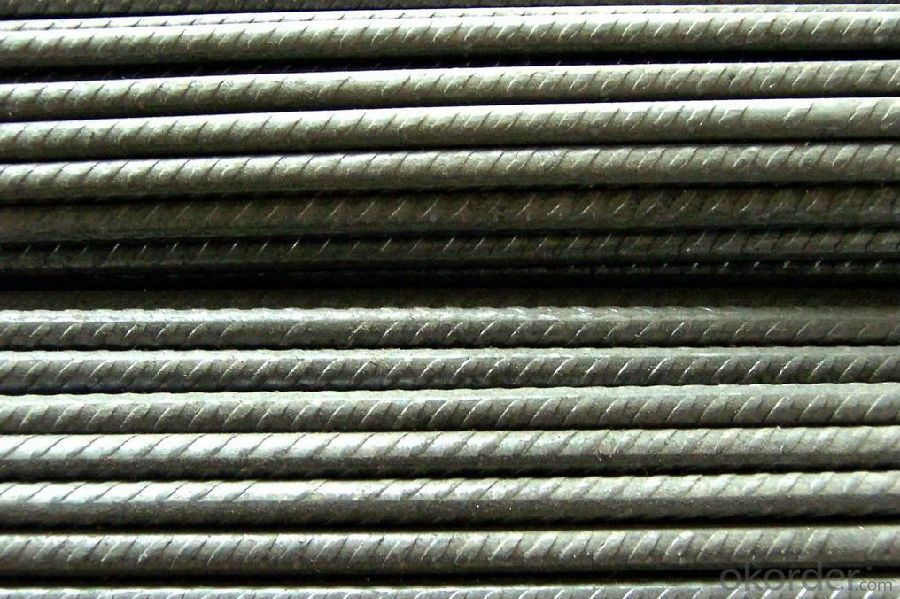
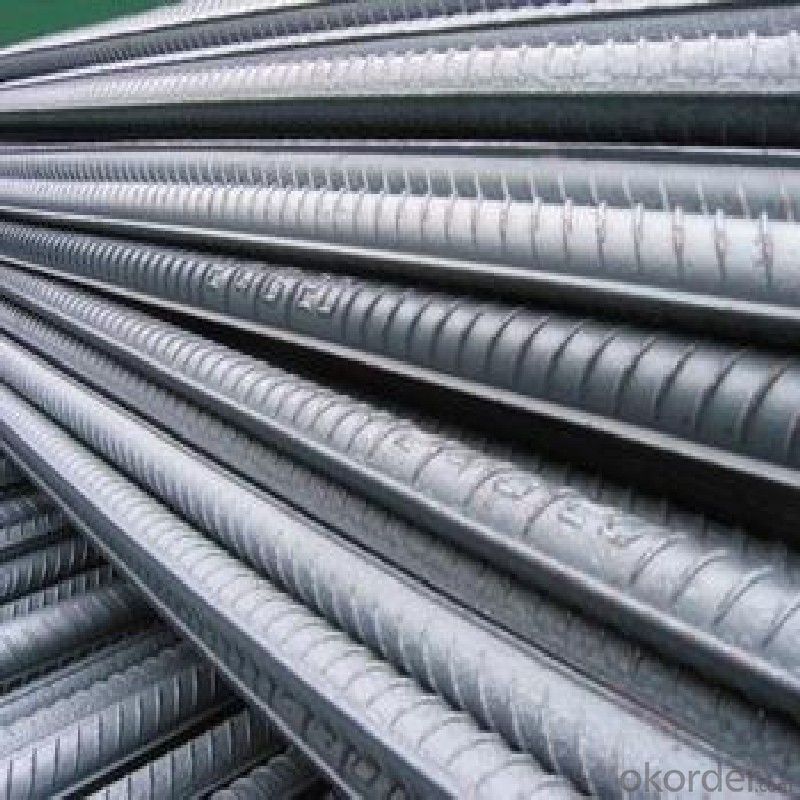
- Q: How are steel rebars stored on site to prevent damage?
- Steel rebars are typically stored on site in a way that prevents damage by keeping them off the ground, away from moisture, and organized to avoid any bending or deformation. This can be achieved by using racks or pallets to elevate the rebars, covering them with tarps or plastic sheets to shield from rain or snow, and arranging them in a neat and orderly manner to minimize any accidental mishandling or impact.
- Q: What are the guidelines for preventing steel rebars from rusting during construction?
- There are several guidelines to prevent steel rebars from rusting during construction. Firstly, rebars should be stored in a dry area to avoid moisture exposure. Secondly, they should be covered with a waterproof material to protect them from rain or snow. Thirdly, rebars should not be in direct contact with the ground to prevent moisture absorption. Additionally, using epoxy coating or galvanization can provide an extra layer of protection against rust. Lastly, proper curing of concrete should be ensured to minimize the risk of moisture penetration into the rebars.
- Q: How do steel rebars contribute to the overall structural integrity of a building?
- Steel rebars contribute to the overall structural integrity of a building by providing reinforcement to concrete structures. They enhance the strength and durability of concrete by withstanding tensile forces, which concrete alone is not able to withstand. This reinforcement system helps distribute and resist the loads and stresses acting on the building, increasing its resistance to bending, cracking, and collapsing. Ultimately, steel rebars ensure that the building can withstand various external forces, such as wind, earthquakes, and heavy loads, thereby ensuring the overall stability and safety of the structure.
- Q: How do steel rebars affect the overall cost of maintenance and repairs?
- Steel rebars can significantly impact the overall cost of maintenance and repairs. These reinforcement bars enhance the strength and durability of concrete structures, reducing the likelihood of cracks, deterioration, and structural failures over time. By preventing such issues, steel rebars minimize the need for extensive repairs and maintenance, ultimately lowering associated costs in the long run.
- Q: What are the guidelines for inspecting steel rebars on a construction site?
- The guidelines for inspecting steel rebars on a construction site typically include checking for proper placement, alignment, and spacing of the rebars according to the project specifications and design drawings. Inspectors also need to ensure that the rebars are free from any damages, rust, or contamination that could affect their structural integrity. Additionally, inspectors should verify the rebars' dimensions, lengths, and grades, as well as their proper anchorage and connection to adjacent elements. Regular inspections throughout the construction process are crucial to maintain quality and compliance with safety standards.
- Q: What are the different methods for reinforcing concrete with steel rebars?
- There are several methods for reinforcing concrete with steel rebars, each serving a specific purpose and providing different levels of strength and durability. 1. Traditional Reinforcement: This method involves placing steel rebars horizontally and vertically within the concrete structure. The rebars are typically arranged in a grid pattern and tied together at intersections using wire or metal ties. This method is commonly used for general reinforcement in slabs, walls, and columns. 2. Pre-stressed Reinforcement: In this method, steel rebars are pre-tensioned before they are embedded in the concrete. This is done by stretching the rebars using hydraulic jacks and anchoring them to the structure's foundation. The tension in the rebars helps counteract the tensile forces that occur when the concrete is subjected to loads, resulting in increased strength and resistance to cracking. 3. Post-tensioned Reinforcement: Similar to pre-stressed reinforcement, post-tensioning involves the use of steel rebars that are tensioned after the concrete has hardened. This is achieved by placing ducts or sleeves within the concrete before pouring, and then threading the rebars through them. Once the concrete has cured, the rebars are tensioned using hydraulic jacks, applying a compressive force that enhances the overall strength and load-bearing capacity of the structure. 4. Fiber Reinforced Concrete: Instead of traditional steel rebars, fibers made of steel, glass, synthetic materials, or natural fibers can be added to the concrete mix. These fibers act as a secondary reinforcement system, providing additional strength and durability to the concrete. Fiber reinforced concrete is commonly used in applications such as industrial floors, bridge decks, and pavements. 5. Shotcrete Reinforcement: Shotcrete is a method where a wet mix of concrete and steel fibers is sprayed onto a surface using a high-pressure hose. This technique is commonly used in slope stabilization, tunnel linings, and underground constructions. The steel fibers in the shotcrete provide reinforcement and improve the overall structural integrity of the sprayed concrete. Overall, the choice of reinforcement method depends on the specific requirements of the project, including the type of structure, expected loads, and desired durability. By selecting the appropriate method, engineers can ensure that the reinforced concrete structure possesses the necessary strength and resilience to withstand the intended usage and environmental conditions.
- Q: Can steel rebars be used in structures with high alkaline environments?
- Structures with high alkaline environments, like concrete, generally allow for the use of steel rebars. Nevertheless, it is crucial to take into account the potential for corrosion in such environments. The alkaline nature of concrete forms a protective layer, known as a passive film, on the surface of the steel rebar, which aids in preventing corrosion by reducing contact between the steel and corrosive elements. However, several factors can impact the corrosion resistance of steel rebars in high alkaline environments. These factors encompass the quality of the concrete, the presence of chloride ions (which can disrupt the passive film), the extent of environmental exposure, and the design of the structure. Ensuring that high-quality concrete is used and taking measures to minimize the presence of contaminants that may accelerate corrosion are of utmost importance. In cases where the alkaline environment is highly aggressive or the structure is subject to severe conditions, additional protective measures might be required. These measures can include the application of corrosion-resistant coatings or the implementation of cathodic protection systems to mitigate the risk of corrosion. In conclusion, careful consideration of the specific conditions and appropriate measures are essential when using steel rebars in structures with high alkaline environments. Consulting with structural engineers and corrosion specialists can aid in determining the most suitable approach for utilizing steel rebars in such settings.
- Q: Are steel rebars resistant to termites and other pests?
- Yes, steel rebars are highly resistant to termites and other pests.
- Q: What are the different sizes of steel rebars available in the market?
- The different sizes of steel rebars available in the market vary depending on the specific requirements of construction projects. Common sizes range from #3 (10mm) to #18 (57mm) in diameter, with various lengths available as well. These sizes are standardized and widely used in the industry to ensure structural integrity and compatibility with reinforced concrete applications.
- Q: How do steel rebars affect the overall durability of a structure?
- The overall durability of a structure is greatly enhanced by the presence of steel rebars. These rebars play a crucial role in reinforcing concrete, contributing to the building's structural integrity and longevity. By distributing and withstanding tensile forces, they increase the load-bearing capacity of the structure. One of the primary advantages of steel rebars is their ability to resist cracking and prevent the propagation of cracks in concrete. Since concrete is weak in tension, introducing rebars helps absorb and distribute tensile stresses, reducing the likelihood of crack formation. This is particularly important in areas prone to seismic activity or other dynamic forces. Furthermore, rebars also exhibit excellent resistance to corrosion, which is a common threat to the durability of structures, especially those in coastal or humid environments. Typically, the steel used in rebars is treated with corrosion-resistant coatings or made from stainless steel, ensuring long-term protection against rust and deterioration. The inclusion of steel rebars in concrete structures also improves their resistance to fire. Steel has a high melting point, and when integrated into concrete, it acts as a heat sink, slowing down the spread of fire and allowing for additional time for evacuation and firefighting efforts. In conclusion, steel rebars greatly contribute to the overall durability of a structure by enhancing its resistance to cracking, corrosion, and fire. Their ability to reinforce concrete and withstand tensile forces ensures the structural stability and longevity of the building, making it more resilient to various environmental and man-made hazards.
Send your message to us
Deformed Bar Hot Rolled High Quality BS4449 ASTM
- Loading Port:
- Tianjin
- Payment Terms:
- TT OR LC
- Min Order Qty:
- 25 m.t.
- Supply Capability:
- 2000000 m.t./month
OKorder Service Pledge
OKorder Financial Service
Similar products
Hot products
Hot Searches
Related keywords
